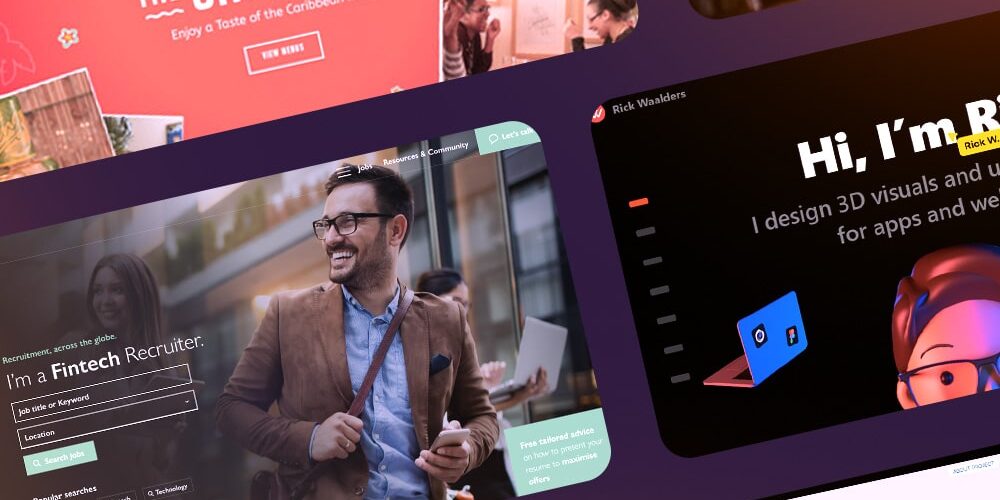Good question. Let’s start with the basics.
What are MOOCs, Anyway?
Massive Open Online Courses or MOOCs are Web-based classes that are freely available to an unlimited number of students. Freely available, but not necessarily free; some charge enrolment fees. Instruction is mainly via multimedia, with video and audio tuition being accessible to subscribers at their own convenience.
The term MOOC originated in 2008 with two academics: Bryan Alexander of the Georgetown, Texas National Institute for Technology in Liberal Education and Dave Cormier of the University of Prince Edward Island, Canada. Stephen Downes and George Siemens (in conjunction with Canada’s University of Manitoba) ran the first MOOC to be recognised as such: “Connectivism and Connective Knowledge”.
Sebastian Thrun (who developed the driverless car for Google), David Stavens and Mike Sokolsky launched Udacity in 2012, as a profit-making body offering MOOCs. It attracted 160,000 students from 190 countries. Soon afterward, Stanford University’s Daphne Koller and Andrew Ng launched Coursera – also as a money-making venture. The non-profit organisation edX was later established by the Massachusetts Institute of Technology (MIT) and Harvard University, and became the other leading figure in the MOOC ecosystem.
Even when they aren’t free, MOOCs are considerably less expensive than formal schooling, and offer a top-notch level of education to potentially millions of users.
The Death of Traditional Universities?
In line with formal teaching (and unlike the majority of eLearning courses) MOOCs follow a set timeline, with a syllabus that can span several weeks. Discussion forums and formal assessments are part of the programme.
By making quality education available to the masses – wherever they are – without the stringent admissions protocols that might otherwise exclude the vast majority, MOOCs could pose a serious threat to the survival of traditional institutions of learning. But for various reasons, that potential hasn’t been fulfilled, yet.
The Facts of Life
When stacked up against the formal education system, statistics don’t favour the MOOC:
A study conducted by the University of Pennsylvania determined that 96% of people who enrolled for MOOCs didn’t go on to complete the courses. This figure is confirmed by a similar survey conducted in 2012-2013 by Harvard University and MIT.
Even Coursera co-founder Daphne Koller accepts the high drop-out rate as par for the course (though with a positive spin, as we’ll see). In response to a survey by moocs.com that put the average rate of course completion in 2012 at a mere 7%, Koller said:
“Of the people who sign up for a MOOC, on average half or more don’t even show up on the first day.”
An Introduction to Computer Science course run by David Malan at Harvard University has an on-campus enrolment of 800 students, with a teaching staff of 100. The online (MOOC) version of the same course boasts 350,000 users – but with only 5 accredited teachers (assisted in part by student and alumni volunteers) to oversee the discussion forums.
A 2012 Harvard University survey revealed that over 60% of people who take MOOCs already have a Bachelor’s or Master’s degree, suggesting that, rather than a means to educate the masses, the Massive Open Online Course could merely be a new tool, for the already well-educated.
Udacity co-founder Sebastian Thrun has predicted that by 2062, only 10 institutions will be responsible for delivering higher education to the population of the world. If that’s going to happen, some serious issues need to be addressed.
Speaking of Numbers…
The student-to-teacher ratio for MOOCs is generally very high. Conventional wisdom holds that the lower that ratio is, the better. This appears to be significant; among the main reasons given by survey respondents for their having dropped out of a course was the lack of engagement with a real, live teacher.
At their simplest, MOOCs are designed as a sequence of pre-recorded videos. Progress through a course is at the student’s pace, and there’s often no set path from beginning to completion. Typically there are no live instructors to consult as the lectures progress, and there may be few opportunities to trade ideas and opinions with fellow learners.
The lack of feedback from live teachers means a lack of assurance along the way that the student is on a worthwhile path. There’s also little opportunity for follow-up activities. At the end of a course, it’s essentially up to the student to gauge his/her overall success.
On the plus side of the equation, it’s undeniable that MOOCs are meeting their promise of massive appeal. Over 21.5 million students have signed up for Coursera tuition, as of January 2014, for instance. And across the globe, there are currently hundreds (at least) of MOOCs in session.
Shopping Around, or…?
Daphne Koller and others have put a somewhat different interpretation to the notoriously high drop-out rate for Massive Open Online Courses. The analogy used compares course enrolment to catalogue or window shopping. Most who sign up for a course (they argue) aren’t seriously intending to take it – they’re just highlighting it as an option that looks interesting. With little or no financial commitment in trying out a course or two, they do just that.
Koller goes further to equate early drop-outs to someone picking up a newspaper and reading some of it – but not every single story. Not digesting it from cover to cover doesn’t represent a failure of the paper to do its job. The fact that people have read and assimilated some of it may be enough, in itself.
In a sense, a MOOC may be considered the Internet equivalent of a textbook. And like a reference text, it’s possible for them to form the basis of a full-blown academic course, or to act as an occasional resource for curious learners wanting to dip in, for facts.
Best of Both Worlds
Aside from the high student-teacher ratio, MOOCs have struggled to recreate the ambience of a formal educational setting, with its intimate tutorials, informal group discussions, campus social life, etc. Then there are the degrees and professional credentials which colleges and universities award, with their implications for future employment opportunities. To say nothing of mentorship, alumni associations and networking.
Yet universities and other institutions may lack facilities made possible by the technology of MOOCs. Tools for interactivity and assessment like the edX software platform developed by MIT and Harvard could be gainfully deployed in making campus courses more engaging and successful. For example, lectures can be broken into shorter units (as for online consumption), enabling students to take in this content at their own speed.
Big Data analytics are being applied to feedback and assessment results from students taking MOOC lectures. Data mining techniques are yielding insights that could equally be of use to those assessing degree students and those seeking professional qualifications at formal institutes of learning.
A study of 11 MOOCs conducted by the Massachusetts Institute of Technology (MIT) in spring of 2013 found that some 28% of those enrolled were currently or formerly teaching at secondary (high) school and junior levels. There’s a real possibility that the knowledge and techniques they absorb from the MOOCs will be communicated in turn to their students.
Economic Considerations
MOOCs are providing a real alternative to the prohibitive costs of tuition, accommodation, and living expenses at traditional universities. This may prove increasingly significant in an environment where annual expenses at the top institutions can be in excess of $58,000 for a single student.
“Massive Open Online Courses (MOOCs): Not Disrupted Yet, But The Future Looks Bright”, a study by Deloitte spanning the years from 2002-2012 saw the yearly student debt figures in the U.S.A. rise from $200 billion in 2003 to $1 trillion in 2012. Within that period, tuition costs rose by 72%, while earnings for those in the 25-30 years age bracket dipped by 15%.
Again, there’s scope for pooling ideas and best practices. Several universities have entered partnerships with industry and private backers to get funding and resources, with employment opportunities for students who graduate. MOOCs could greatly benefit from this approach. In turn, traditional educational establishments could serve their paying students better, with courses augmented by interactive MOOC technologies.
SPOCs
Harvard University is testing the waters with help from its alumni community in Small Private Online Courses, or SPOCs. The hope is that by offering a MOOC-style educational experience to a limited student body, insights into how best to incorporate elements of that training into the mainstream curriculum may emerge. The University of Michigan has adopted a similar strategy, with a view to the longer term.
International Joint Ventures
At the University of Michigan, 44% of the school’s intake of overseas students (about 2,619 in all) during the 2014-2015 session come from China, Macau, and Hong Kong . Beyond the campus, 23,000 students from this region are enrolled in the “Model of Thinking” Massive Open Online Course, which goes out in Mandarin, and was developed in conjunction with Coursera.
The MOOC giant has collaborated with four Chinese institutions, among them Shanghai Jiao Tong University and Peking University, to produce course content in Chinese languages. And since 2013, Coursera has entered agreements with Hujiang, Guokr, and NetEase, to set up Chinese versions of courses originally authored in English.
The University of Michigan’s assistant vice provost of Digital Education & Innovation, James DeVaney, hopes the initiatives will yield valuable learning analytics insight into how enhanced multimedia and interactive technologies impact student engagement and course success.
Of MOOCs and Vamps
In 2013, the University of California, Irvine launched a MOOC drawing inspiration from the popular television series “The Walking Dead.” The course delved into the zombie phenomenon as a backdrop to exploring scientific concept , mathematics and health .
This year, the university has rolled out “Fight or Die: The Science Behind FX’s ‘The Strain”. Irvine has teamed up with cable television channel FX and tech company Instructure to produce a MOOC based on the popular vampire TV show. It’s a 4-week course running on the Instructure Canvas Network platform.
The MOOC takes place in an environment where a devastating attack by cyber-terrorists and a fast-spreading disease epidemic set the stage for exploring the theoretical and practical aspects of cyber-crime, parasitology, and disease dynamics. The course is driven by video excerpts from “The Strain”, and students are required to compare the science in the television drama to analogous situations in real life. Students are also expected to generate original content of their own to share, based on the course concepts.
The first module of the course is this summer, and the premiere for Season 2 of “The Strain” airs three weeks after that. Enrolment is currently underway at the Canvas Network website – and it’s free.
Intelligence, in Future?
While acting as director of education policy at the New America Foundation, Kevin Carey studied MOOCs with an eye to making them better. He points out that there’s untapped potential for Artificial Intelligence (AI), in making the MOOCs learning experience more personal. Wearable technology and online feedback could contribute vast pools of data whose analysis can be used to tailor courses to each student’s unique requirements.
There’s also the option to use natural intelligence and channel it artificially. Video conferencing, chat room, and interactive feedback technologies may be used in future to make one-on-one contact with live teaching staff more readily available to MOOC participants. This would serve to redress the student-teacher ratio balance that currently exists, and is proving such a barrier to widespread adoption.
Whatever happens, expect the MOOCs to be with us, for some time. They may not replace formal education, but they’re certainly having an effect
Get more leads, make more sales, grow your brand faster.






